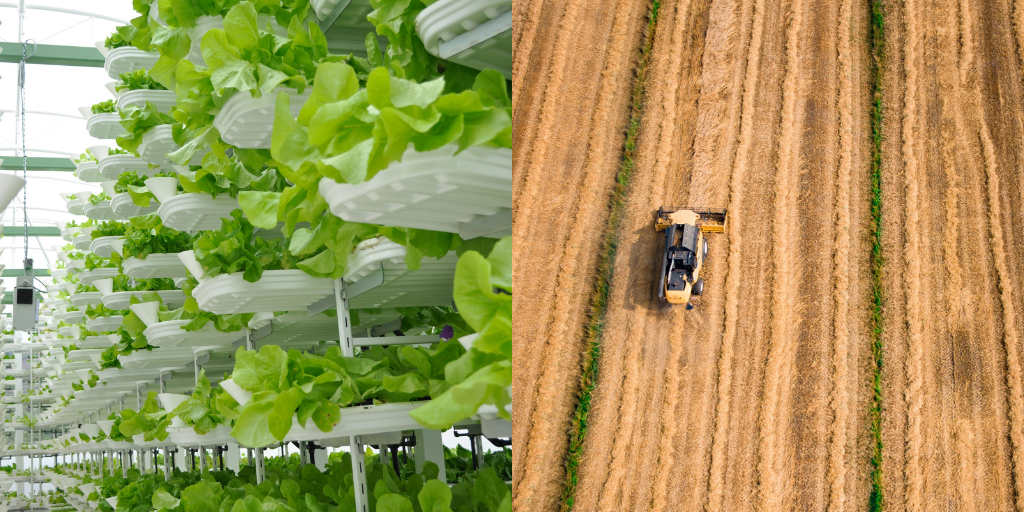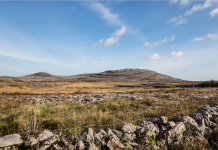Written by: Geoffrey Holland
‘The challenge of feeding humanity is vast, maybe greater even than the challenge of stabilizing the climate, or population, and its importance is far less widely acknowledged by governments, policymakers, and consumers. It is literally the defining issue of the human destiny.’ – Julian Cribb, Author, Food or War
Survival requires sustenance. Nothing much gets done by people, who are hungry.
It has been said, ‘There are only seven meals between civilization and anarchy.’
As the COVID-19 pandemic continues to threaten human health across the globe, it is also disrupting the food supply in many places, including the US.
Let’s take a moment to provide some perspective.
Large scale, till and sow, mono-crop agriculture has been around at least since the era of Roman rule. Much of humanity has been wedded to that method of growing food and feeding itself ever since. Within that enduring framework, farming has evolved substantially since those beginnings.
Over the centuries, as the population grew, more and more land covered in forest and natural vegetation has been cleared to expand the supply of food for human consumption. At the same time, growing methods have evolved to squeeze ever more production from an acre of farmland. Chemical fertilizers, pesticides, and genetically modified seed are now widely employed to expand crop yield.
Every year, 27 trillion gallons of groundwater are consumed by humans in the US alone. About 80 percent of that is used to grow food.
We are now pushing the world’s farmland to its limits. A third of our Earth’s arable land has been lost to soil erosion and pollution over just the past four decades. In the US alone, the National Academy of Sciences reports that top-soil is being lost at a rate that is ten times the level that is sustainable.
In arid regions, like the central valley of California, crops depend on irrigation, with water drawn from sub-surface aquifers, which are being exploited unsustainably, and are increasingly in danger of exhaustion. There is also a problem with trapped sub-surface salts carried up from the depths with irrigation water, rendering soil toxic to plant growth. As we move through the early part of the 21st century, a number of existential factors have emerged that threaten humanity’s ability to feed itself.
The Impact of Population Growth
Humans have been around as a distinct species for perhaps 200,000 years. For most of those years, we survived as hunter-gatherers living off the land. It took from those beginnings, all the way to the calendar year 1970 for the human population to grow to 3 billion. In just the fifty years since then, the human population has exploded to nearly 8 billion. Much more than double in a half-century. We continue to add about 75 million more humans to the population every passing year. Each additional human requires food, water, and shelter to survive. In a just world, add to that the right to education, healthcare, and personal security.
One could say that humans are the most successful species in the history of our planet. We dominate every ocean, every corner of the landscape. That human success has come at substantial cost to the biosphere we all depend on.
Our Earth is not getting any larger. It has only so much to give. As humans take more and more of the rapidly dwindling store of critical resources, we find the living fabric of the planet coming apart all around us. Consider what is happening to the other lifeforms with whom we share our Earth; their numbers are collapsing. We’re talking about plant species as well as many animal species, including insects, amphibians, reptiles, fresh water and pelagic fish; birds, and mammals. We humans are mammals. As our numbers have exploded, populations of other warm-blooded wild mammalian species are headed in the opposite direction. Elephants, lions, tigers, giraffes; the numbers of pretty-much all of the most iconic, warm-blooded, wild animal species on Earth are in free fall.
A recent study by the National Academy of Sciences looked at just mammals. It found that of all the mammalian biomass on the planet, 60 percent is accounted for by livestock animals raised, and destined to be slaughtered, and turned into fillets, cutlets, burgers, and nuggets for human consumption. Another 36 percent of total mammalian biomass is human; just humans. The total for all other wild mammals remaining on Earth amounts to only 4 percent. I repeat: 4 percent; for all the rest of Earth’s wild mammals.
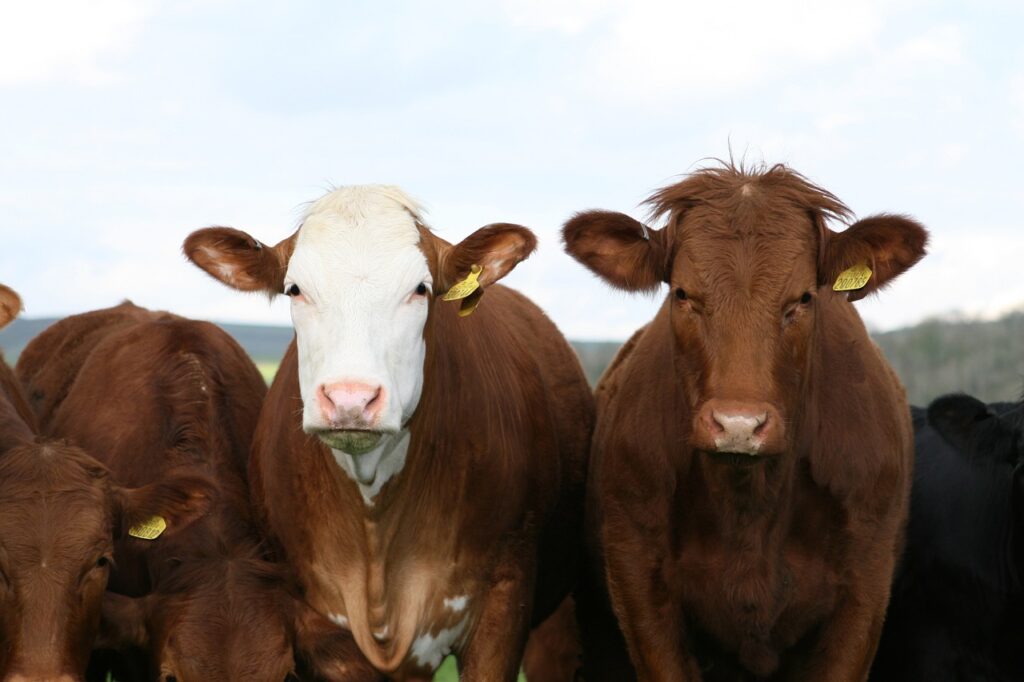
Anybody who chooses to thoughtfully consider these facts must conclude that the world’s remaining wild animals are in great peril. We live now in a planetary biosphere hugely out-of-balance; egregiously and relentlessly exploited and increasingly overwhelmed by humans.
Climate Change and the Food Supply
Early on in human evolution, we discovered fire. We have been using fire to advance our agenda ever since. From the beginnings of the industrial era in the 19th century, human exploitation of fossil forms of energy like coal and oil has expanded exponentially. When burned, in cars, to heat homes, and to fuel industrial processes, these dirty forms of energy generate massive amounts of carbon dioxide and other heat-trapping pollutants that end up in our Earth’s atmosphere.
Every passing year, we set a new record for human-produced, atmospheric pollution. In 2019, for carbon dioxide alone, it was 37 billion tons pumped into our atmosphere; the only atmosphere we have.
The pollution we are responsible for, in 2019, contributed to a rise in average temperature of 1.15 degrees Celsius above the pre-industrial average. (1880-1900). This global warming is directly linked to more frequent extreme weather; heatwaves, droughts, floods, and wildfires are shredding the fabric of life on every continent.
Growing food on cropland has always been subject to the seasons and the vagaries of weather, but the climate extremes we are seeing now are having an unprecedented impact on agriculture.
In the first four months of 2020, three million humans have died of hunger, worldwide. It will only get worse as time goes on. In some parts of the world, particularly the lesser developed parts of the world, subsistence farming is no longer tenable. Famine is driving unprecedented levels of migration by refugees no longer able to feed themselves.
In the face of continued population growth, our ability to produce enough food to meet human demand is hampered like never before, and will only get worse as time goes on.
The Evolution to a Plant-based Diet
Global meat production grew 58 percent in the 20 years, ending in 2018. In that same period, developing countries accounted for 85 percent of the rise.
In the first four months of the year 2020, humans the world over have consumed well over 100 million tons of meat. By any measure, numbers like that are not sustainable.
‘More than half the US grain and nearly 40 percent of world grain is being fed to livestock rather than being consumed directly by humans.’ David Pimentel, Professor Emeritus, Cornell University
Feeding humanity on animal protein does not make sense ethically, medically, economically, or environmentally. Humans do not need to eat animal protein to be healthy.
The benefits of a plant-based diet are clear. It costs less. It’s much better for the environment, and it has a very positive impact on human health. A study by the Physicians for Social Responsibility reports that a plant-based diet results in a 40 percent reduction in cardiovascular disease, and a 34 percent drop in hypertension.
The carbon footprint of broccoli is 13 times less than beef…That’s just one example. Growing plants has a much smaller environmental impact than raising livestock. With the latter, in the US alone, 300 million tons of manure are produced annually, and that leads to massive amounts of methane released into the atmosphere we all depend on. Methane is 20 to 80 times more potent as a greenhouse gas than carbon dioxide.
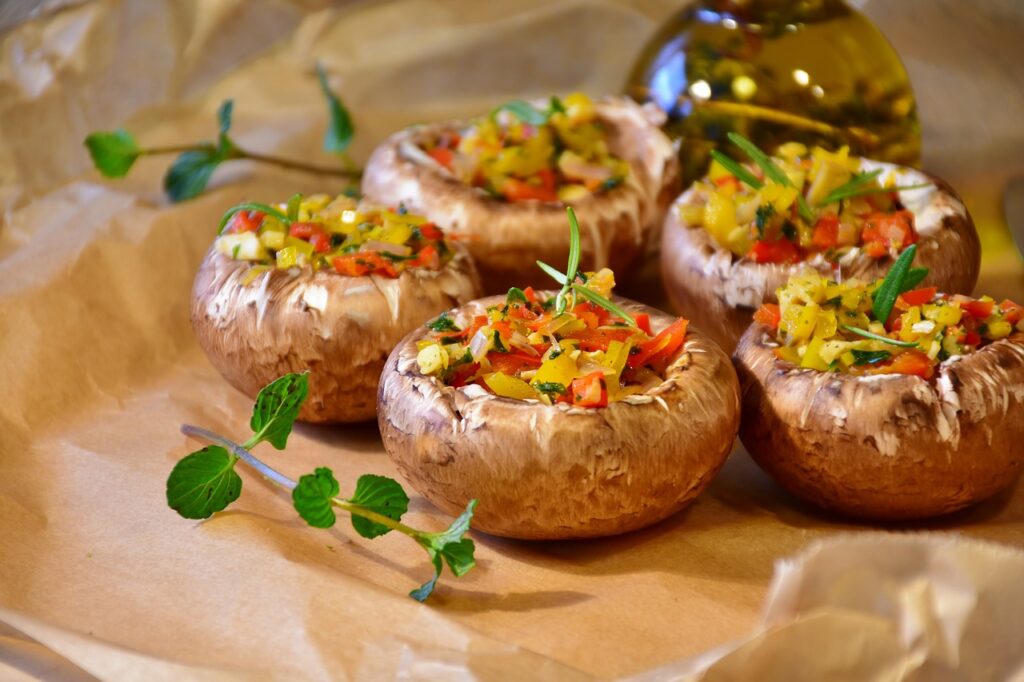
Put simply, there is nothing any human individual could do that would have a more immediate and profound impact on the welfare of our planet than to reduce or eliminate the consumption of animal protein.
It’s very likely that the human population will reach ten billion before the end of this century, or before. All of those people are going to need food. Not only is plant-based eating the right way to go, given the massive numbers of people that will need to be fed, it is the only sustainable way forward.
The Promise of Urban, Vertical Farming
In a classroom at Columbia University, a professor of microbiology named Dickson Despommier, first postulated the idea of growing food crops in multi-story buildings in urban settings.
In 2010, Despommier’s book, Vertical Farming: Feeding the world in the 21st Century, was published. At that time, vertical farming was just an inspired concept. There were no real-life examples.
A decade later, there are hundreds of multi-story indoor farms in operation around the world, with many more in the design and development stage.
The vegetables commonly found in most supermarket produce sections can be grown in indoor vertical farms that are designed to maximize productivity within a very small environmental footprint.
Vertical farms use up to 90 percent less water than soil-based farming. Lettuce, tomatoes, carrots as examples, are grown in high-tech systems, designed specifically for the crop being grown. Some use hydroponics, in which the plant roots are set in water-filled troughs, infused with nutrients. Even more efficient are systems that employ aeroponics, in which plant roots are saturated with a nutrient-rich mist.
Vertical farms are designed with efficient OLED lighting, tuned to radiant frequencies that encourage rapid crop growth.
No soil, no fertilizers, no pesticides are required. Vertical farms are organic farms. No toxic chemicals in the grow cycle.
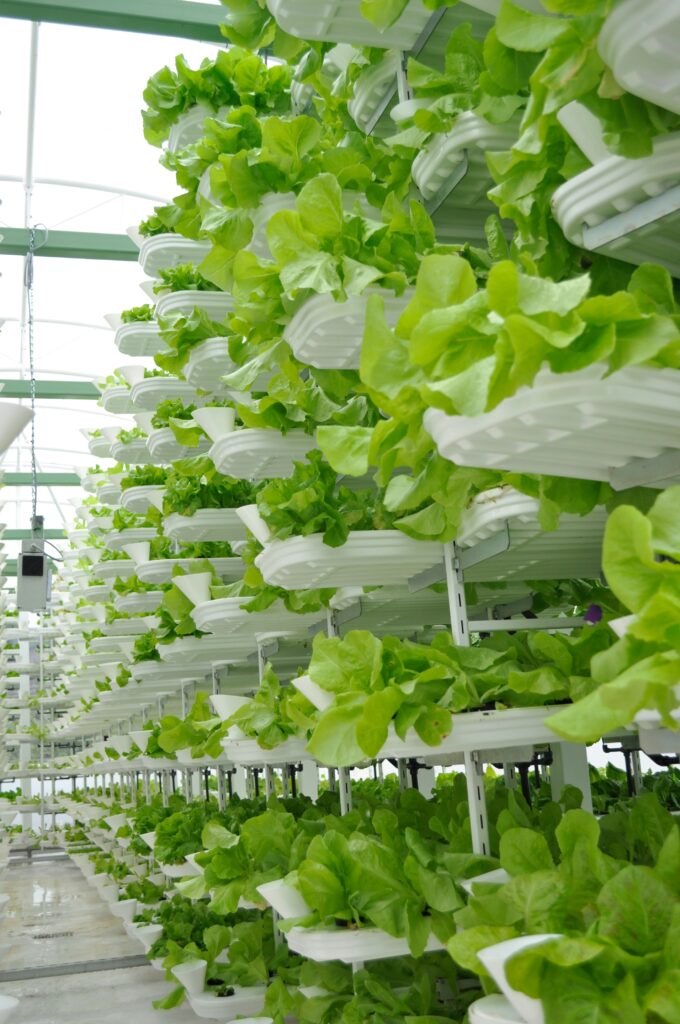
Vertical farms can be purpose built from the ground up. They can also be made from abandoned shopping malls, warehouses, and other multi-story commercial structures, that are built out with hi-tech growing systems. They can be located anywhere, but are particularly well-suited in urban settings, where the food they produce is close to consumers. Contrast that to the current brand of industrial agriculture, where crops often are trucked thousands of miles from where they are grown, before they end up on someone’s plate.
There is no need to own and maintain expensive tractors or farm implements with vertical farming. Moreover, they can be powered entirely by clean, cost-effective, renewable sources of energy.
Traditional, soil grown crops are generally limited to one crop in a season, and crop yield can vary greatly depending on weather conditions. With vertical farms, there are no seasons, and weather is not a factor.
Three, sometimes four crops can be harvested in a single year in a vertical farm.
Overall, the efficiency of vertical farming translates to yields per square meter that can be fifty times what can be harvested from conventionally worked farmland.
The hi-tech grow systems employed in vertical farms are also being used in some state-of-the-art greenhouse operations. The difference is the greenhouses are on one level, built on the ground. In densely populated urban centers, applying the technology vertically is more cost-effective.
The cost of build-out and start-up of vertical farming systems is significant, but amortized appropriately, the food crops grown are cost competitive with the same produce grown traditionally. That will only improve over time as economies of scale and technical innovation reduce the overall cost of production.
When fully developed, hi-tech, indoor farming has the potential to provide 60 percent to 80 percent of an urban center’s food needs.
The Impact on the Environment
About 29 percent of our Earth’s surface is land, and about 71 percent of that land is habitable. Half of that habitable land is used for agriculture; of that, 77 percent is dedicated to livestock production, and 23 percent is used to grow crops.
Tying up that much of our planet’s habitable land just to feed humans has had a devastating impact on our biosphere.
Livestock production generates massive amounts of animal waste, contributing about 15 percent of total global greenhouse gas emissions.
Job one for every human is to be a good planetary citizen. Protecting nature, people, and planet is in everyone’s interest. Our survival depends on it. A good citizen will adjust to a substantial reduction of animal protein in her or his diet. That is likely to happen over the next few decades. A lot of land no longer needed for grazing livestock will revert to its natural state. A good thing by any measure.
What about the land tied up in growing crops for human consumption? The current, widely practiced brand of commercial farming relies heavily on the use of industrial ag chemicals. Groundwater runoff from these farmlands sends large amounts of phosphorus, nitrogen, and pest control chemicals into waterways that ultimately flow into our oceans. The Mississippi watershed for example: toxic agriculture runoff from ten states is carried down the river, and into the Gulf of Mexico. The result is a six thousand square mile ocean dead zone.
Toxic groundwater runoff from commercial farming will diminish substantially as traditional farms are supplanted by hi-tech, non-polluting, vertical farms located in urban centers, where most people live. As that happens, a lot of land currently dedicated to food production will go fallow. Much of that will be left to revert to its natural state, restoring its resiliency and living diversity.
The Half-Earth Project calls for half of our Earth’s land and oceans to be returned to their natural state, protected from human exploitation. That would be a huge commitment toward restoring our planet’s biosphere. Every human has an interest in seeing this bold idea come to fruition. Encouraging the widespread adoption of urban, vertical farming makes the return of half the Earth to nature a genuine possibility. Just the kind of human initiative we all should stand behind as part of our obligation to protect the biosphere, which we cannot do without.
‘The concept of a disruptive technology is simple. It disrupts the present and jumpstarts the future. The vertical farm has the potential to do that by advancing agriculture to a place in history it has never before occupied, one of true sustainability.’ – Dickson Despommier, The Vertical Farm
Public Ownership of Food Production
Urban farming does not have to be a product of private enterprise. In fact, corporations who are profiting from the sale of fertilizers, pesticides, genetically modified seed, farm equipment, and fuel for that equipment can be expected to aggressively resist any change from ‘business-as-usual’ in agriculture.
The emergence of urban, vertical farming offers an opportunity to foster a variety of alternative ownership forms, including traditional cooperatives, new multi-stakeholder cooperatives (i.e. public-cooperative partnerships), employee ownership, and social enterprise. One precedent is Green City Growers in Cleveland, Ohio. One of the largest urban greenhouses in the United States, the business is also a worker cooperative and a member of the Evergreen network of cooperatives. The public interest goes beyond assuring a reliable food source. Given the troubled times we live in, state and local governments should embrace and support cooperative business models, as a way of energizing communities, reducing inequality, building community wealth, and providing employment in disadvantaged and disinvested communities.
In his book, Our Common Wealth, author Thomas Hanna writes about the value of hybrid forms of business ownership for enterprises that provide critical services to the community.
‘Vertical farming seems well suited to various cooperative and community ownership forms. Supported by public institutions and strategies, cooperatively owned and operated vertical farms could not only solve some of our most pressing ecological challenges, but also deliver a host of economic and social benefits for communities around the world.’ – Thomas Hanna, Our Common Wealth
Feeding Humanity in an Existentially Challenged World
Urban, vertical farming is a made for the moment idea. It’s reliable. It’s good for the environment. It’s the smart way to feed ourselves in coming decades, as we navigate a worthy pathway forward.
Our goal must be to shape a life-affirming brand of sustainable living for all of humanity. Vertical farming can be a foundational piece, on which we create that kind of future. We need to be building vertical farms right now; lots of them, the world over. We should not just leave it to private enterprise. Local government needs to play a role. That’s how we get it going across the planet. We need to go big now. Growing our food vertically must be a global initiative. It must be fueled by committed citizens at the grass roots; people, who choose to engage and stand by each other.
We are all stressed by the unsettled times in which we live. The hardest part is the uncertainty. Uncertainty is our common enemy. Let’s feed ourselves vertically, as we get our common survival plan in order. A good plan ends the uncertainty. A good plan inspires the common good. A good plan compels us to get on with it. We must fully engage. The remediation process needs to start now. Going full blast with vertical farming is a winner for humanity, no matter how you look at it.
‘The Earth is the only world known, so far, to harbor life. There is nowhere else, at least in the near future, to which our species could migrate. Visit, yes. Settle, not yet. Like it or not, for the moment, the Earth is where we make our stand.’- Carl Sagan – The Pale Blue Dot
Header Image Credit: Valcenteu/Wikimedia (left) and Kees Streefkerk/Unsplash (right)
Geoffrey Holland is an Emmy Award-winning writer/producer, the author of The Hydrogen Age, and Coordinator of the Stanford University MAHB Dialogues.

